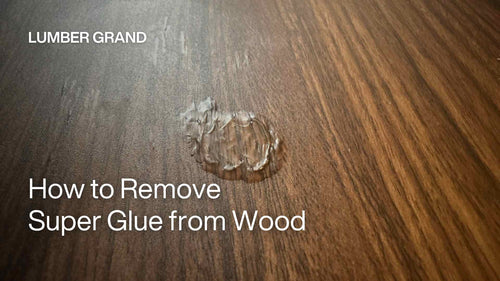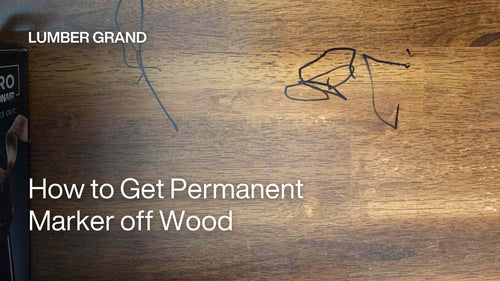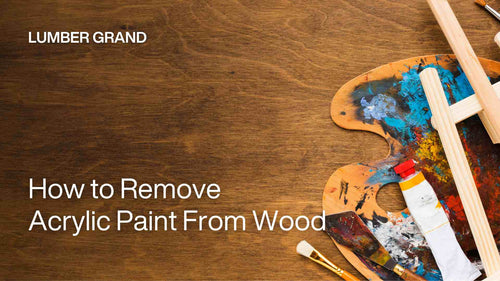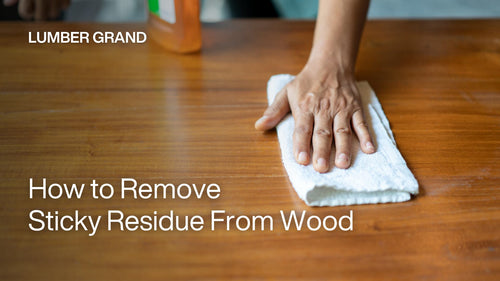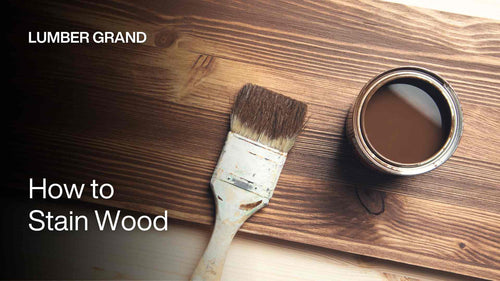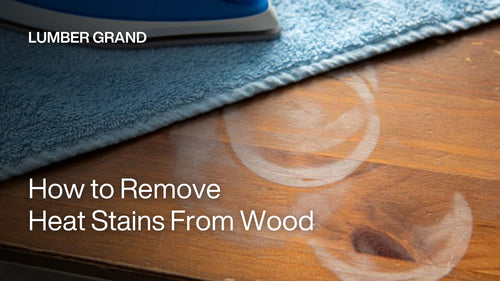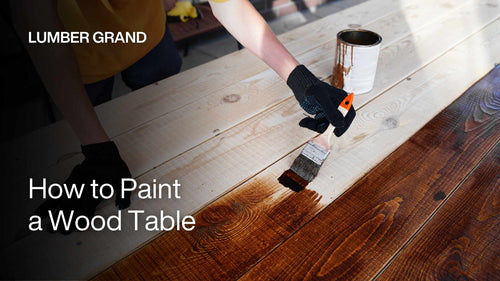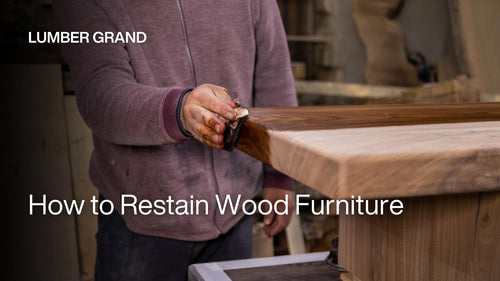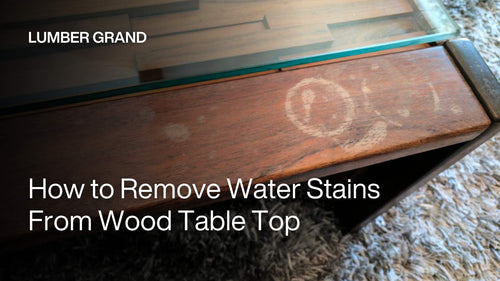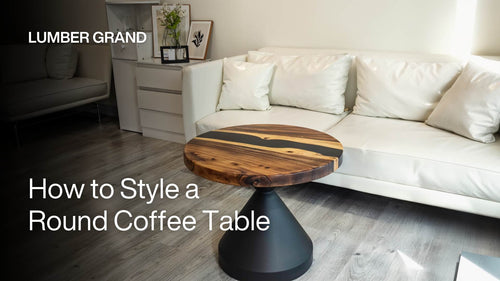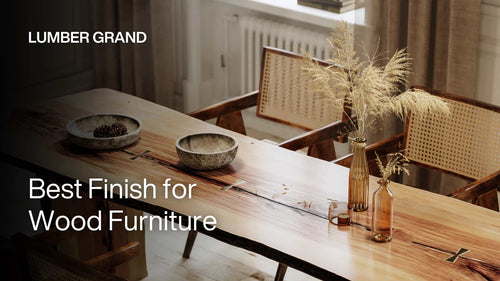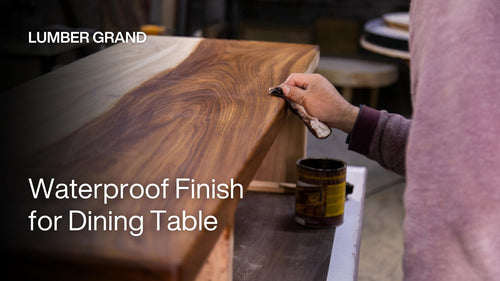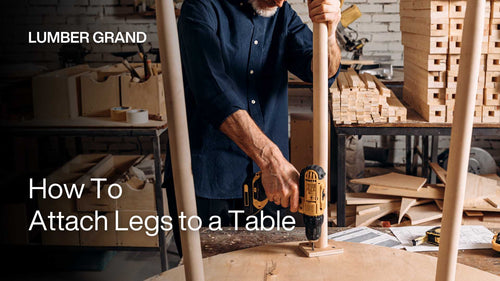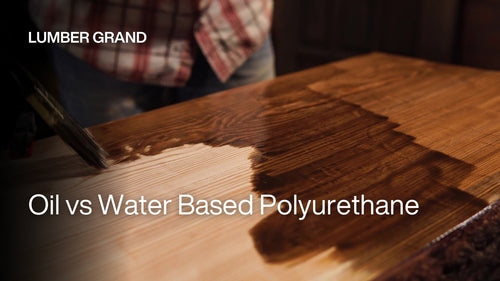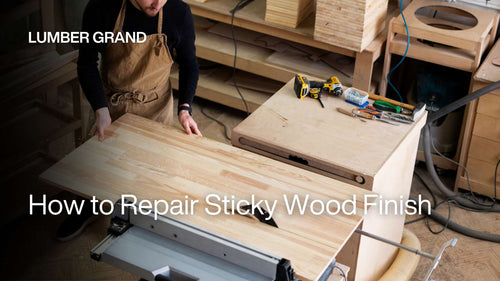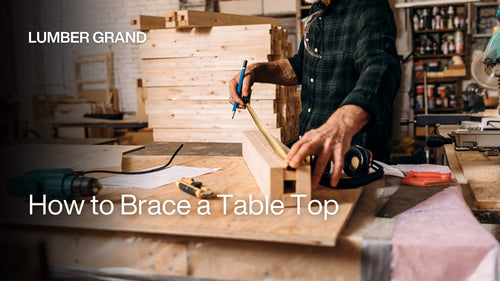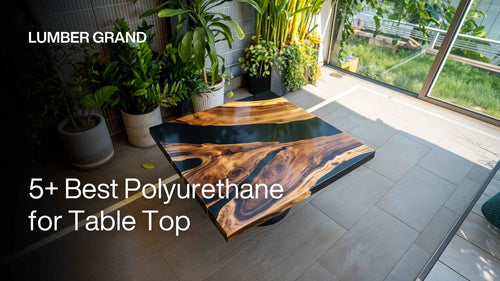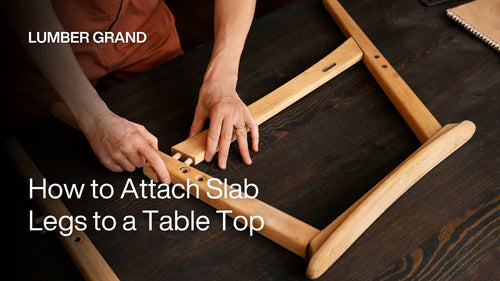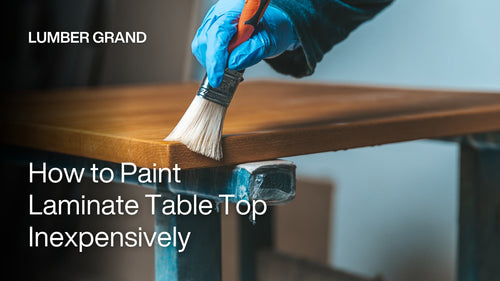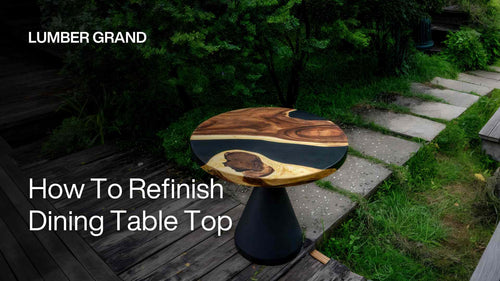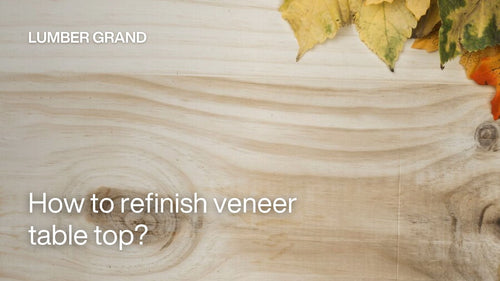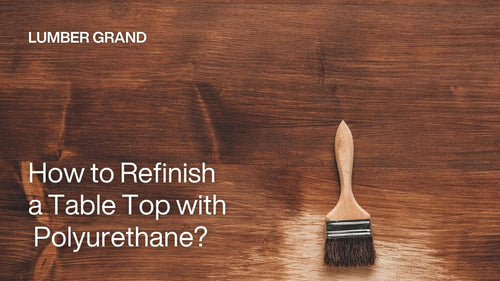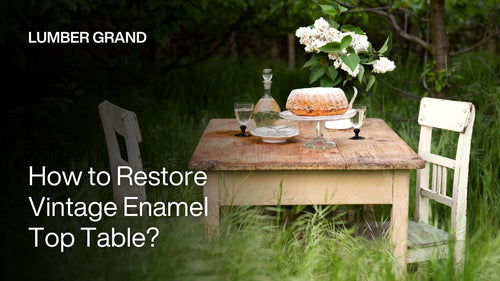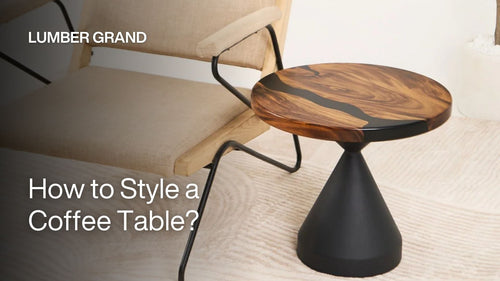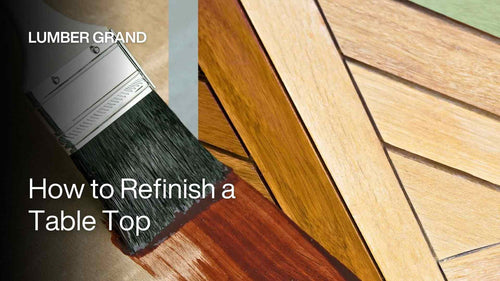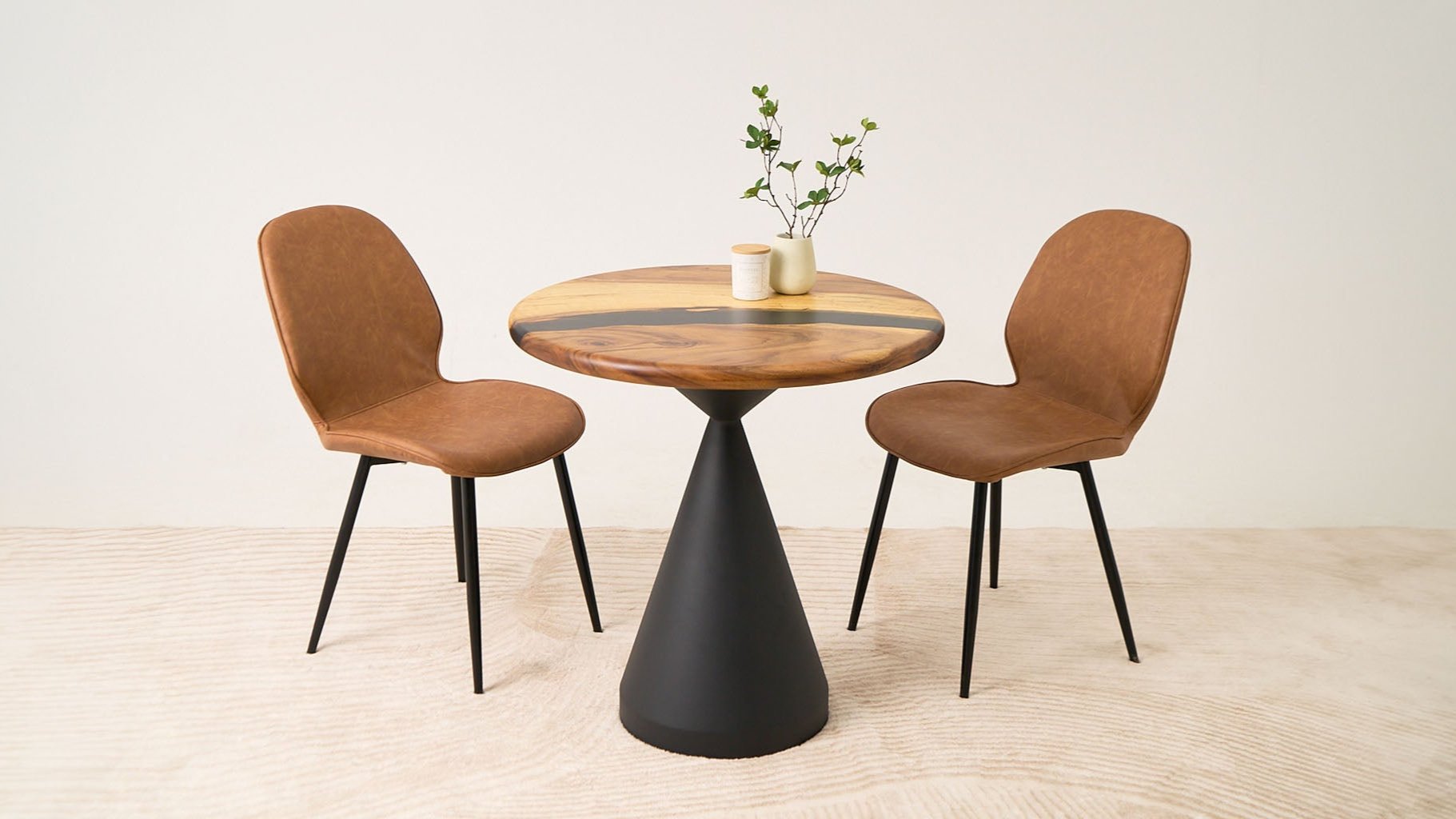Most people think learning how to stain wood is about picking the right color and brushing it on. But, after staining hundreds of table tops at Lumber Grand, we've discovered the real secret lies in what you do in the first 30 seconds after application.
That's when everything's soaking into the wood grain, and what you do right then makes the difference between a smooth, even finish and something that looks like a beginner did it in their garage. So, what is the exact secret in this How to Apply Stain to Wood guide? Read more below!
When You Need Wood Stain And When You Don't
Many DIYers assume every piece of lumber needs stain before it's finished. That's actually not the case. We've seen gorgeous oak tables ruined by unnecessary staining, and we've also seen basic lumber transformed into something that looks like it came from a high-end furniture store.
So, there are definitely times when how to stain wood makes perfect sense for your project.
1. Your lumber needs a little help
Construction-grade pine and poplar from the home center aren't exactly showstoppers on their own. The grain tends to be plain, and the color can look washed out under indoor lighting. A quality penetrating stain can transform these budget-friendly boards into something that rivals premium hardwoods.
2. You're matching existing finishes
Maybe you're building floating shelves to complement your dining room table. Or, your client wants their new vanity to coordinate with their bedroom furniture. Wood species vary naturally. Even boards from the same tree can look different once they're milled and dried.

Our customer has chosen an epoxy table top with a stain matched to her decor
Credit: Lumber Grand
Shop now: Square Epoxy Coffee Table 35" x 35"
3. Your clients have specific visions
When you're working on commissioned pieces, customers often have exact color expectations. They might bring you a Pinterest photo of "driftwood gray" or insist their entertainment center matches their existing "cherry" cabinets. Professional woodworkers know that meeting these requests usually means reaching for the stain samples.
4. You want colors that don't grow on trees
Literally, you see those trendy weathered grays, deep ebony tones, or barn wood effects everywhere. They're all created with specialty stains. Oak doesn't naturally turn gray, and maple won't give you that rich espresso look without some help.
*Note: Stain penetrates the wood fibers to change color, but it won't protect your project from daily use. That's why we always need a protective topcoat like polyurethane, lacquer, or shellac to prevent water rings and other damage.
Related blog: Best Polyurethane for Kitchen Table
Do You Need to Sand Wood Before Staining?
YES, always sanding before staining. A stain is basically a liquid that soaks into wood fibers. If those fibers are rough, torn, or covered in mill marks, your stain will highlight every single imperfection. What should be a smooth, even color becomes a mess of dark streaks and blotchy spots.
You can try this simple test on your next project: take two scraps from the same board. Sand one piece properly and leave the other rough from the saw. Then, you apply the same stain to both pieces, like the picture below:

The sanded one gives you that smooth finish
Photo: Youtube | Biscuit Tree Woodworks
As you can see, the unsanded piece will look amateur. The uneven color, visible scratch marks, and dark blotches where the stain pooled in the torn grain. The sanded piece will have that smooth, consistent finish you're after.
So, if you ever asked us how to stain wood without sanding, we always advise the contrary.
You might like: How To Refinish A Table Top Without Stripping and Sanding
How to Stain Wood Furniture Like a Pro in 5 Easy Steps
Lumber Grand has been staining wood epoxy tables for years, and we can tell you that the most significant mistakes happen before you even open the stain can. The steps below share the exact process that will give you smooth, even coverage every single time.
Step 1: Prepare Tools and Materials
Materials:
-
Wood stain (oil-based or water-based)
-
Pre-stain wood conditioner
-
Sandpaper (100, 150, 180, 220, 320 grit)
-
Cotton rags or foam brushes
-
Protective finish (polyurethane)
-
Pencil for marking
-
Vacuum or tack cloth
-
Nitrile gloves
Safety equipment:
-
Well-ventilated workspace
-
Safety glasses
-
Dust mask for sanding
Step 2: Clean and Sand the Wood Surface
How to stain wood for beginners starts with getting your sanding right. You can't skip this part if you want good results.
-
Grab some 100-grit sandpaper first. It takes care of all those lines from the sawmill and any rough spots you can feel with your hand.
-
Then work through the finer papers: 150-grit, then 180-grit, and finish with 220-grit. Each one makes the wood a little smoother.
-
Clean up the dust after each different sandpaper. We just use my shop vacuum, but you could brush it off by hand.

How to stain wood for beginners starts with getting your sanding right
Photo: Freepik
Tips: Before you switch to the next sandpaper, take a pencil and draw some light lines across your wood. Keep sanding until those pencil marks are completely gone. That's how you know you're ready for the next step.
Step 3: Apply Pre-stain Conditioner on Blotch-prone Woods
Your wood might look perfect after sanding, but you're not done yet. Even the smoothest surface can look terrible once you add wood stain. This happens because different wood areas (knots, cathedral grain, dense vs. soft areas) absorb stain at different rates.

How to stain wood furniture in step 3
Photo: Youtube | Biscuit Tree Woodworks
Pre-stain wood conditioner fixes this problem, and it really works. You need to apply it after sanding but before staining:
-
Apply a generous coat with a foam brush
-
Allow 15 — 20 minutes to dry until it doesn't feel wet when you touch it.
You might like: Best Polyurethane for Table Top
Step 4: Stain the Wood
You've got three good choices for tools: regular brushes with bristles, foam brushes, or cotton rags. I like cotton rags best. They give you better control and won't leave brush marks.
Whatever you pick, put on some gloves first. Stain will color your hands just as well as it colors wood, and it doesn't wash off easily.
-
Use circular motions when you first put the stain on
-
Wait 3 — 5 minutes (your stain can tell you exactly how long)
-
Grab a clean rag and wipe off any stain that's still sitting on the surface

How to stain wood the right way in step 4
Photo: Freepik
Step 5: Add a Protective Topcoat Finish
Stain by itself doesn't protect anything. It just changes the wood’s color. Hence, you need a clear coat to protect your project from water rings, scratches, and everyday wear.
I suggest one of two finishes, depending on what you're building and how much time you have.
-
If you have any ideas on how to stain wood without stain, oil-based wipe-on polyurethane is the way to go. It gives wood a nice warm, amber glow and holds up really well to daily use. The catch is you have to wait 8 to 24+ hours between coats.
-
Water-based polyurethane dries completely clear and lets you add the next coat in just 2 to 4 hours. Don't worry when it goes on looking milky white — that disappears as it dries.

How to apply stain to wood in step 5
Photo: Youtube | Biscuit Tree Woodworks
Related blog: 5 Best Finish for Dining Table
Either way, you'll want 3 thin coats for good protection. Do you sand after staining? You do, but just very lightly between the clear coats. Use 320-grit sandpaper, which is just enough to knock down any rough spots and help the next coat stick properly.
Important note: Those rags you used to apply stain and finish might catch fire. Shop fires always happen because people don't know about this danger.
When oil-based stains and finishes dry, they create heat. If you ball up those rags and toss them in the trash or leave them in a pile, that heat builds up with nowhere to go. Eventually, it gets hot enough to start a fire on its own. No spark needed.
Here is how to solve it:
-
Take those used rags and spread them out flat on your concrete garage floor or driveway, away from anything that could burn.
-
Leave them there overnight until they're completely dry and crusty to the touch.
-
Once they're totally dried out, you can throw them away normally.
You might like: How to Polyurethane a Table
How Long Does it Take for Wood Stain to Dry?
Wood stain drying time changes based on what you're using, but here's what you can generally expect:
-
Stain type: Oil-based vs water-based. Water-based versions dry way faster than oil-based ones.
-
Temperature and humidity: Sticky summer days can easily double your waiting time. Conversely, warm air speeds things up, but too much heat makes the stain dry patchy and uneven.
-
Wood species: Dense hardwoods like oak or maple retain moisture longer than softer woods like pine. That sounds weird, but harder wood doesn't soak up as much stain, so there's less moisture sitting around and waiting to evaporate. We also recommend the 8 best wood for table top if you’re looking for one.
-
Application thickness: Glob it on heavy and you'll be waiting forever. Thin, even coats dry much faster. One more reason to wipe off excess stain like you're supposed to.
Generally, for most indoor projects, you should wait 4 to 6 hours before you handle the piece, and 12 to 24+ hours before you put on your protective finish.

Ideal temperature and humidity for wood stains to dry
Photo: Lumber Grand
Outside of how to stain wood, you might like: How to Repair Sticky Wood Finish
Top 10 Popular Wood Stain Colors to Try This Week (including Images)
To let you know, wood stain colors interact differently with various wood species. That means the same stain will look completely different on pine versus oak. So, always test your chosen stain on a hidden area or scrap piece first.
These 10 stain colors for wood are what furniture makers and DIYers are reaching for right now.

10 popular wood stain colors
Photo: Lumber Grand
-
The rich, deep colors:
-
Dark Walnut never goes out of style. The deep brown looks amazing on pretty much any wood and fits whether your house is traditional or super modern. It's the color pros recommend when people can't decide.
-
Special Walnut got picked as Color of the Year, and you can see why. It's that perfect medium brown that doesn't fight with your furniture or wall colors. Works every single time.
-
Mahogany gives you those gorgeous reddish-brown tones that make wood look expensive. Great for when you want your project to feel rich and warm.
-
The warm golden shades:
-
Golden Oak is what most people think of when they picture stained wood. It brings out the grain without being too dramatic. Safe choice that always looks good.
-
Honey Maple works really well on lighter woods like pine or maple. Adds just enough warmth without making things too dark.
-
Harvest Gold creates that cozy, inviting feeling. It’s incredible for kitchen tables or anything in your dining room.
-
The modern neutral options:
-
Natural is for people who want the wood to look like wood, just better. Brings out the grain without adding much color. Very popular with the minimalist crowd.
-
Mocha hits that sweet spot between brown and gray. It works great in modern farmhouse-style homes where you want something warm but not too traditional.
FAQs
1. What is the Best Way to Apply Stain to Wood?
The best way to apply stain on wood is to sand your wood first and then work through the grits up to 220 for a nice smooth surface. If you're using soft wood like pine, you should put on some pre-stain conditioner first so it doesn't get blotchy.
When applying the stain, use circular motions to work it into the grain. Give it time to soak in. Afterward, you wipe off everything that didn't soak in with a clean rag.
2. Can I Just Stain Wood Without Sanding?
Yes, you could, but you won't like how it turns out. Wood straight from the lumber yard has rough spots and machine marks that make the stain go on unevenly.
You'll have dark streaks and light patches that look pretty amateur. Even a quick sanding with 150-grit makes a huge difference, and finishing with 220-grit gives you that smooth surface stain lovers.
3. How Long do You Leave a Wood Stain on Before Wiping Off?
Usually, somewhere between 5 and 15 minutes, but definitely check what your specific stain says on the label.
-
Wipe the stain off immediately if you'd like a lighter tone.
-
The longer you wait, the darker it gets.
Just don't leave excess stain sitting there longer than it says, or you'll have a sticky mess that won't dry right. I always set a kitchen timer so I don't forget.
4. Is it Better to Stain with a Brush or Rag?
Cotton rags give you better control and a smoother finish. They don't leave brush marks and make it easier to work the stain into the grain with circular motions. On the other hand, brushes work fine for large flat surfaces, but you'll still need to follow up with a rag to remove excess and prevent streaking.
How to Stain Wood: That's a Wrap on Wood Staining
How do you apply stain to wood boils down to following proven processes:
-
Always sand properly before staining
-
Use pre-stain conditioner on blotch-prone woods
-
Put the stain on evenly and wipe off what doesn't soak in
-
Protect with an appropriate topcoat
-
Practice fire safety with oily rags
If you run into any challenges, don't hesitate to reach out. Our team is here to help you achieve that perfect finish. Also, check out our helpful blogs for expert tips and detailed tutorials.
Whether this is your first time staining how to stain wood furniture or you're just looking to get better results, these fundamentals will take care of you. Yes, it takes a little extra time and effort to do things correctly, but when you see that beautiful, professional-looking finish, you'll know it was worth it!









